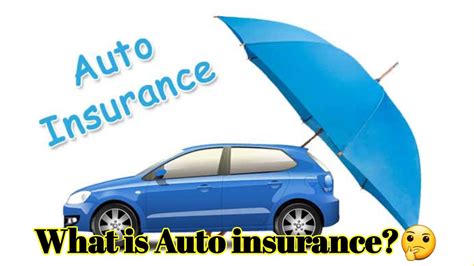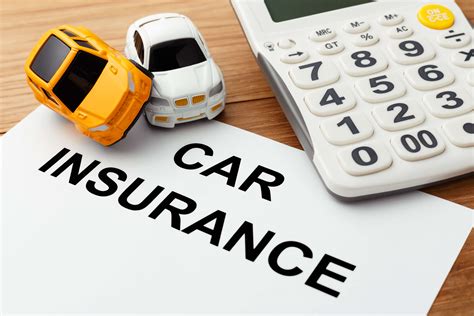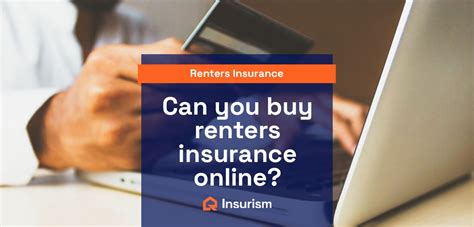What Is Auto Insurance

Auto insurance, also known as car insurance or motor insurance, is a crucial aspect of vehicle ownership. It provides financial protection to individuals and businesses by covering various risks and liabilities associated with owning and operating a motor vehicle. With millions of vehicles on the roads worldwide, the importance of auto insurance cannot be overstated. In this comprehensive guide, we will delve into the intricacies of auto insurance, exploring its purpose, coverage options, benefits, and how it plays a vital role in ensuring road safety and financial security.
Understanding the Purpose of Auto Insurance

The primary purpose of auto insurance is to safeguard policyholders against potential financial losses resulting from accidents, theft, or other vehicular incidents. It acts as a safety net, ensuring that individuals can manage the costs associated with vehicle repairs, medical expenses, and legal liabilities. Auto insurance is designed to protect not only the policyholder but also their passengers, pedestrians, and other drivers involved in an accident.
Additionally, auto insurance plays a significant role in promoting responsible driving behavior. By requiring individuals to carry insurance, it encourages drivers to be more cautious and aware of their surroundings, ultimately reducing the likelihood of accidents and road-related incidents. This, in turn, contributes to a safer and more secure driving environment for everyone.
Key Components of Auto Insurance Coverage

Auto insurance policies typically consist of several coverage components, each designed to address specific risks. These components can vary depending on the insurance provider and the region, but some common coverage types include:
- Liability Coverage: This is the most fundamental type of auto insurance. It covers the policyholder's legal responsibility for bodily injury or property damage caused to others in an accident. Liability coverage helps protect the insured from potential lawsuits and financial burdens.
- Collision Coverage: Collision coverage provides protection for damages to the insured vehicle resulting from a collision with another vehicle or object. It covers repair costs, regardless of who is at fault, up to the vehicle's actual cash value.
- Comprehensive Coverage: Comprehensive insurance offers protection against non-collision-related incidents such as theft, vandalism, natural disasters, or damage caused by animals. It ensures that the policyholder is not left financially burdened in unforeseen circumstances.
- Medical Payments Coverage: Also known as Personal Injury Protection (PIP), this coverage pays for medical expenses incurred by the policyholder and their passengers after an accident, regardless of fault. It provides quick access to medical treatment and helps manage healthcare costs.
- Uninsured/Underinsured Motorist Coverage: This coverage steps in when the at-fault driver in an accident does not have sufficient insurance to cover the damages. It protects the insured from financial losses and ensures they receive compensation for their injuries and property damage.
Benefits and Advantages of Auto Insurance
Auto insurance offers a range of benefits that go beyond financial protection. Here are some key advantages of having adequate auto insurance coverage:
- Financial Security: Auto insurance provides peace of mind by ensuring that policyholders are financially protected in the event of an accident, theft, or other vehicle-related incidents. It helps cover the costs of repairs, medical bills, and legal expenses, preventing significant financial strain.
- Legal Compliance: In most jurisdictions, having valid auto insurance is a legal requirement. By carrying insurance, drivers comply with the law and avoid penalties, fines, or even the suspension of their driving privileges.
- Peace of Mind: With auto insurance, drivers can focus on their journeys without worrying about the financial consequences of an accident. It provides reassurance, knowing that they are protected and can receive assistance when needed.
- Quick Claims Resolution: Insurance companies have established processes for handling claims efficiently. Policyholders can receive prompt assistance, with their claims being assessed and resolved within a reasonable timeframe, ensuring a smoother recovery process.
- Customizable Coverage: Auto insurance policies can be tailored to meet individual needs and budgets. Policyholders can choose the coverage limits, deductibles, and additional options that best suit their circumstances, providing flexibility and value.
Factors Influencing Auto Insurance Premiums
The cost of auto insurance, known as premiums, can vary significantly based on several factors. Understanding these factors can help policyholders make informed decisions when choosing an insurance policy. Here are some key considerations:
- Driver's Profile: Insurance companies assess the risk associated with each driver. Factors such as age, gender, driving history, and location play a role in determining premiums. Younger drivers and those with a history of accidents or violations may face higher premiums.
- Vehicle Type and Usage: The type of vehicle insured, its make, model, and year of manufacture can impact premiums. Additionally, the primary usage of the vehicle (e.g., personal, commercial, or leisure) and the annual mileage can influence the cost of insurance.
- Coverage Limits and Deductibles: Policyholders can choose higher or lower coverage limits and deductibles to customize their insurance plans. Higher coverage limits provide more protection but typically result in higher premiums, while higher deductibles can lower premiums but require the policyholder to pay more out of pocket in the event of a claim.
- Location and Risk Factors: The geographic location where the vehicle is primarily driven can affect premiums. Areas with higher crime rates, dense traffic, or a history of frequent accidents may have higher insurance costs. Additionally, the frequency of natural disasters or extreme weather conditions can influence rates.
- Discounts and Bundling: Many insurance providers offer discounts to encourage safe driving practices or for various reasons, such as having multiple policies with the same insurer (e.g., bundling auto and home insurance) or installing safety features in the vehicle.
Tips for Choosing the Right Auto Insurance

Selecting the appropriate auto insurance policy is crucial to ensure adequate protection and value. Here are some tips to help you make an informed decision:
- Research Insurance Providers: Compare different insurance companies and their offerings. Look for reputable insurers with a strong financial background and positive customer reviews. Consider their claims handling process and customer service reputation.
- Understand Your Coverage Needs: Assess your specific needs and circumstances. Consider factors such as the value of your vehicle, your driving habits, and any additional coverage options you may require. Tailor your policy to match your requirements.
- Compare Quotes: Obtain quotes from multiple insurers to compare coverage and premiums. Ensure you are comparing similar coverage options to get an accurate understanding of the market rates. Don't hesitate to ask for discounts or inquire about available bundles.
- Read the Policy Document: Before finalizing your insurance policy, carefully read the terms and conditions. Understand the exclusions, limitations, and any specific clauses that may impact your coverage. Ensure you are comfortable with the policy's provisions.
- Consider Additional Coverage: Evaluate whether you need additional coverage options, such as rental car coverage, roadside assistance, or gap insurance. These can provide extra protection and convenience in certain situations.
The Future of Auto Insurance
The auto insurance industry is continuously evolving, driven by technological advancements and changing consumer needs. Here are some trends and developments shaping the future of auto insurance:
- Telematics and Usage-Based Insurance (UBI): Telematics technology allows insurance companies to monitor driving behavior and offer personalized insurance rates based on actual driving habits. UBI policies provide incentives for safe driving, encouraging drivers to adopt safer practices.
- Digitalization and Online Platforms: Insurance companies are increasingly embracing digital platforms and online services. Policyholders can now purchase insurance, file claims, and manage their policies entirely online, providing convenience and efficiency.
- Artificial Intelligence and Machine Learning: AI and machine learning algorithms are being utilized to enhance risk assessment and fraud detection. These technologies enable insurance providers to make more accurate predictions and streamline their processes.
- Connected Cars and Autonomous Vehicles: With the rise of connected cars and autonomous vehicles, insurance policies will need to adapt. New coverage options may emerge to address the unique risks and liabilities associated with these advanced technologies.
- Sustainable and Green Insurance: As sustainability becomes a priority, insurance companies are exploring ways to offer eco-friendly insurance options. These policies may provide incentives for environmentally conscious driving behaviors or support initiatives that promote sustainable transportation.
Conclusion
Auto insurance is an essential component of responsible vehicle ownership, offering financial protection and peace of mind to drivers worldwide. By understanding the different coverage options, benefits, and factors influencing premiums, individuals can make informed decisions when selecting an auto insurance policy. As the industry continues to evolve, embracing technology and adapting to changing dynamics, auto insurance will play an even more critical role in ensuring road safety and providing comprehensive protection for policyholders.
How much does auto insurance cost on average?
+The average cost of auto insurance varies widely depending on factors such as location, vehicle type, driving record, and coverage limits. According to recent studies, the average annual premium in the United States is around $1,674. However, it’s essential to obtain personalized quotes to get an accurate estimate for your specific circumstances.
What are some common exclusions in auto insurance policies?
+Common exclusions in auto insurance policies may include intentional damage, normal wear and tear, mechanical or electrical breakdowns, racing or off-road activities, and damage caused by natural disasters if not specifically covered by comprehensive insurance.
Can I get auto insurance if I have a poor driving record?
+Yes, even with a poor driving record, you can still obtain auto insurance. However, it may come at a higher cost. Insurance companies consider factors like accidents, violations, and claims history when determining premiums. It’s essential to shop around and compare quotes to find the most suitable coverage for your situation.



